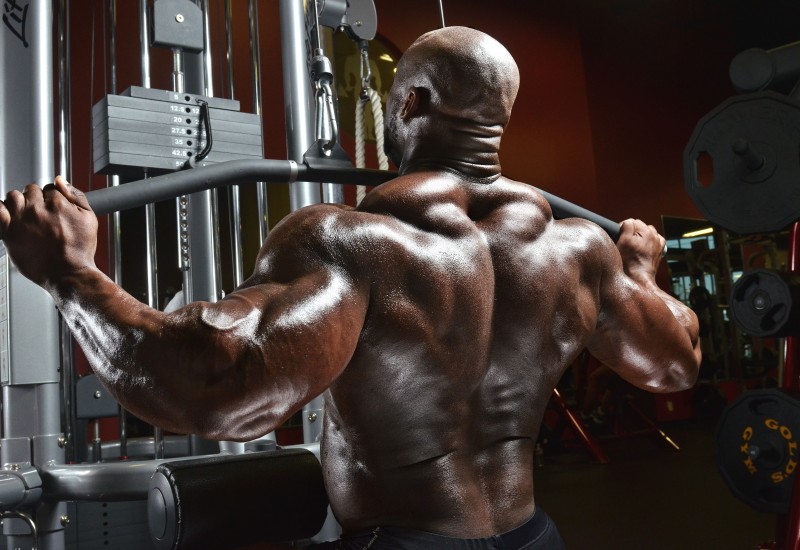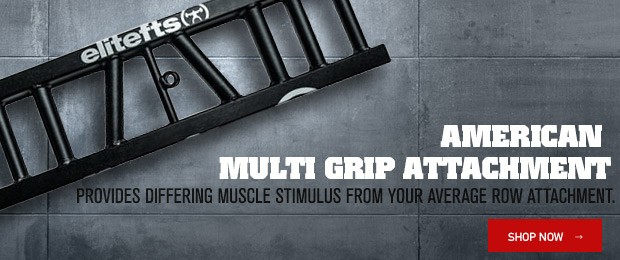
Newbies might do some dumb shit when it comes to training, but I see a lot of seasoned bodybuilders making quite a few mistakes with their training as well. The difference is that you can usually give advice to a newbie and they will listen, while a veteran will think you’re a dumbass because he has it all figured out — never mind that he can’t seem to explain or understand why he isn’t growing very much, if at all.
There is a need or a use for what I call “abbreviated reps” or short reps. If you do a bench press and stay in the bottom portion of the press and not lock out, there is a good argument to be made that the chest does more work without resting in the locked-out position between each rep; the shoulders and triceps tend to do less work, thus working the chest harder. The same can be said for staying in the bottom half or two-thirds of a barbell squat, an overhead shoulder press, or a side lateral raise. However, how much you can benefit from abbreviated reps depends on which “end” of the exercise you are using.
It is my opinion that most exercises do not necessarily need to be worked through a full range of motion to be effective. That being said, there are exceptions and those exceptions are calves and back. I will discuss calves in a different article and will focus on back for this one.
There is nothing more entertaining than seeing a guy with no back development load a Hammer Smith Pulldown Machine with five plates per side and do one-arm pulldowns with a range of motion that utilizes the top third of the movement. If he doesn’t ask himself why his back development is shitty and why his back isn’t growing, he should — however obvious the answer may be. Overloading the back muscles in the stretched position eliminates arguably the most important part of the rep. If more people would focus on “finishing” their back reps, there would be a lot better back development in both your gym and mine.
The term “peak contraction” has been used so much that I think it simply gets no attention anymore. A peak contraction happens when using a full range of motion during an exercise and you finish each rep with a strong squeeze. To most, that peak contraction is simply a short, quick squeeze with no real pause and then you quickly move into the next repetition.
I use the term Pull Through Reps so that people better understand what should be happening during each repetition while training back. It isn’t just a quick squeeze you should be after or a quick hold and pause at the finish of each rep. Each rep should be a full stretch to a full squeeze to utilize a full range of motion, but the squeeze should be understood that you are attempting to pull the repetition PAST the point of full contraction. When the movement stops from a visual and physical standpoint, you should still be attempting to pull through that point at which the movement stopped. This isn’t just a peak contraction or squeeze, but an attempt to continue the movement even when the movement for that repetition has appeared to finish. This can be done while doing the left side and right side simultaneously but is better achieved by performing repetitions one side at a time.
RELATED: Improved Back Recruitment for a Bigger V-Taper
While performing repetitions for back exercises one arm at a time, you allow for a larger range of motion. The best way to explain this is if you do both sides at the same time, the muscles on the right side of the back limit how far the muscles on the left side will move (limited ROM) and vice versa. Essentially, the muscles on the right get in the way of the muscles on the left (and vice versa) and shorten the range of motion. A comparison, to make my point, if you did a cable crossover one side at a time you would be able to pull the arm further across the body providing more of a contraction (ROM) than if you do both at the same time where you are limited by one hand getting in the way of the other, shortening the range of motion.
Pull Through Reps don’t need to be utilized for every exercise. Obviously, great backs have been built by doing chins, barbell bent rows, deads, and other exercises involving both sides working at the same time. I prefer not to use or recommend Pull Through Reps for explosive, power exercises. I would not recommend Pull Through Reps for something like barbell rows or T-bar rows, but I would recommend them for exercises like long pulley rows and almost any Hammer Strength iso-lateral back row or pulldown machine.
A big part of progression is not just banging heavy weights and kicking ass in the gym, but to constantly evaluate your training efficacy. The concept of Pull Through Reps isn’t meant to be a complete overhaul of your back training protocol, but rather a reminder to finish your reps using a full range of motion and to emphasize max contraction for an added edge to help bring up your back development. You still need to bang the compound back exercises heavy, but adding Pull Through Reps can have your back gains progressing again. After all, your back is one of those muscles that can never really get “too big.”
Just Sayin’.
Image courtesy of Jeffrey Sygo at www.symiphotography.com











